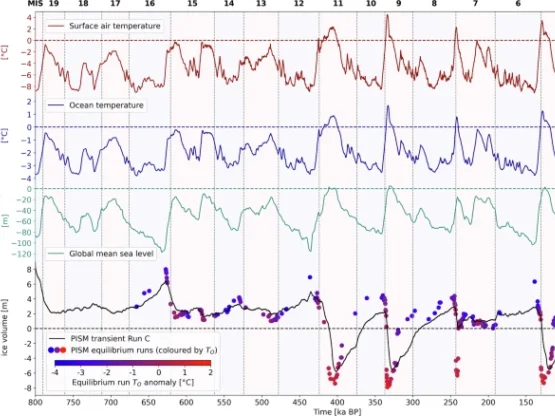A recent OCEAN ICE publication has been published in Nature examines how the Antarctic Ice Sheet has responded to past climate changes and what that means for future sea-level rise. The study suggests that the Antarctic Ice Sheet may already be in a vulnerable state, close to or beyond the tipping point, even without significant additional warming.
"In a new study published in Communications Earth & Environment, researchers from academic institutions in Norway, UK and Germany have run model simulations through the glacial cycles over the last 800,000 years. During this period, the Earth’s climate has switched several times between cold ‘glacials’ and warmer ‘interglacials’. Some of these past interglacials were likely warmer than our present-day climate and give a picture of how the vast Antarctic Ice Sheet could respond to future warming.
In the past 800,000 years, the Antarctic Ice Sheet has had two stable states that it has repeatedly tipped between. One, with the West Antarctic Ice Sheet in place, is the state we are currently in. The other state is where the West Antarctic Ice Sheet has collapsed, first author David Chandler from NORCE in Norway tells." Article from NORCE.
"Scientists at PIK, the Norwegian research centre NORCE and Northumbria University in the United Kingdom conducted model simulations going back 800,000 years to give an extended view of how the vast Antarctic Ice Sheet has responded in the past to the Earth’s climate as it moved between cold “glacial” and warmer “interglacial” periods.
“In the past 800,000 years, the Antarctic Ice Sheet has had two stable states that it has repeatedly tipped between. One, with the West Antarctic Ice Sheet in place, is the state we are currently in. The other state is where the West Antarctic Ice Sheet has collapsed,” lead author David Chandler from NORCE commented." Article from PIK
Read the full nature paper here.


